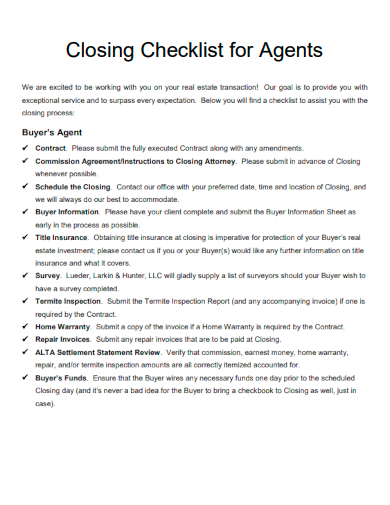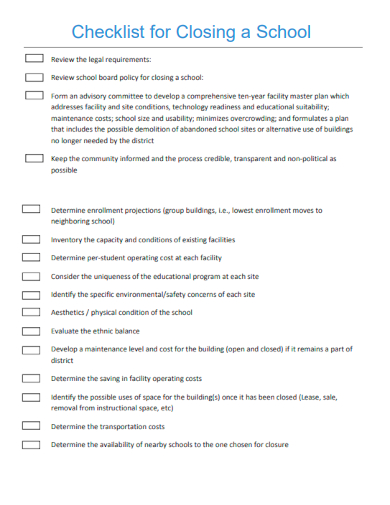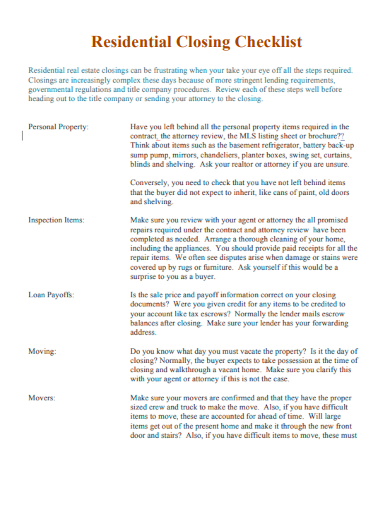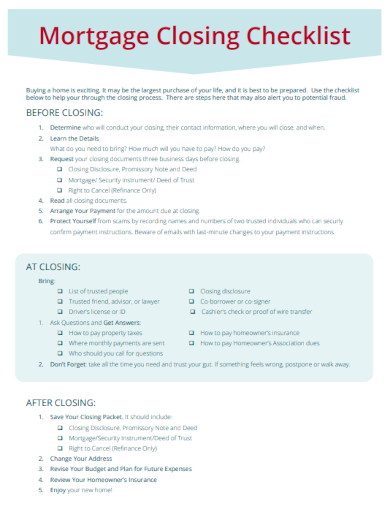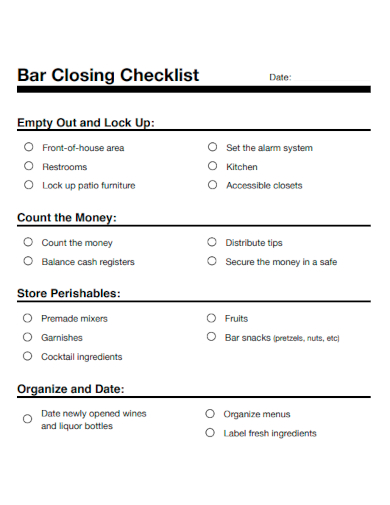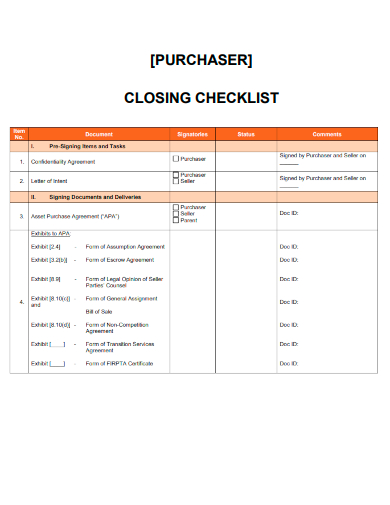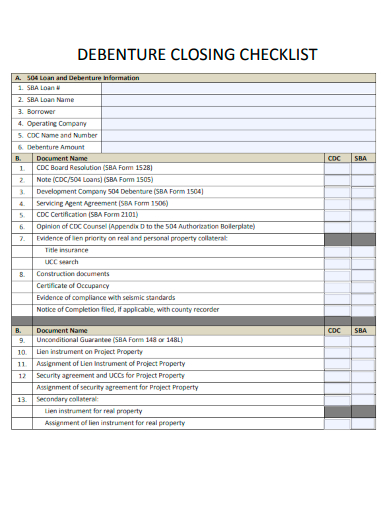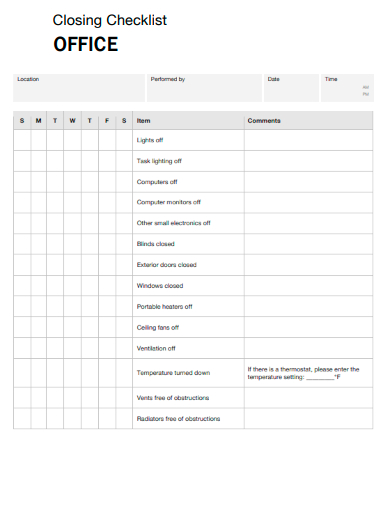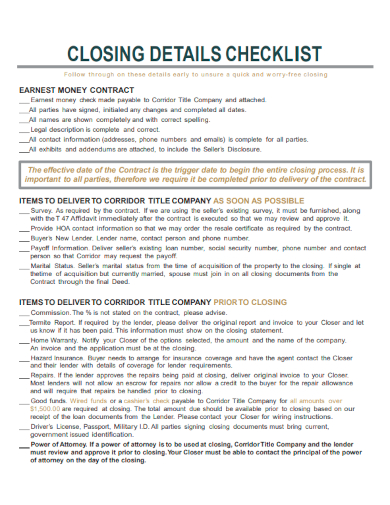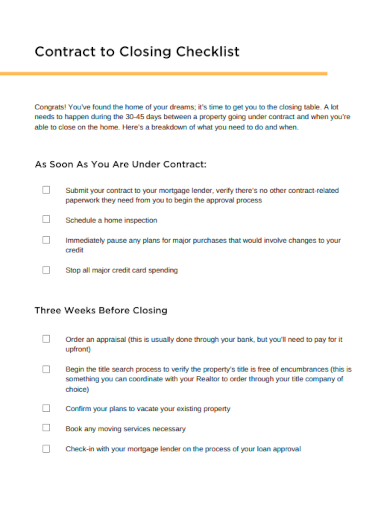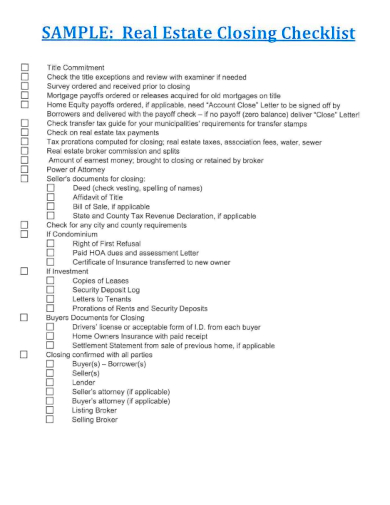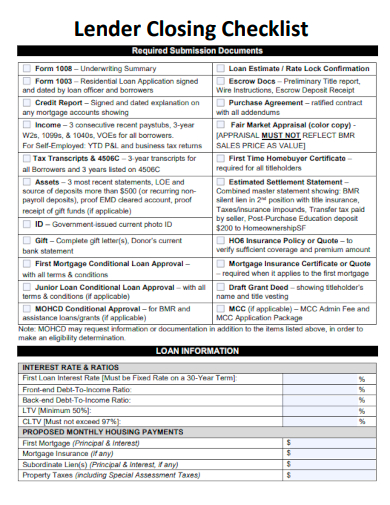Closing a deal or wrapping up a project? A comprehensive ‘Closing Checklist’ can be the difference between success and oversight. Whether it’s real estate, business, or personal tasks, a thorough checklist ensures that every detail is addressed and nothing is left to chance. Dive into our guide to ensure your endeavors are well-organized, efficient, and free from last-minute surprises. It’s your sample roadmap to a seamless close.
FREE 20+ Closing Checklist Samples
1. Sample Restaurant Closing Checklist Template
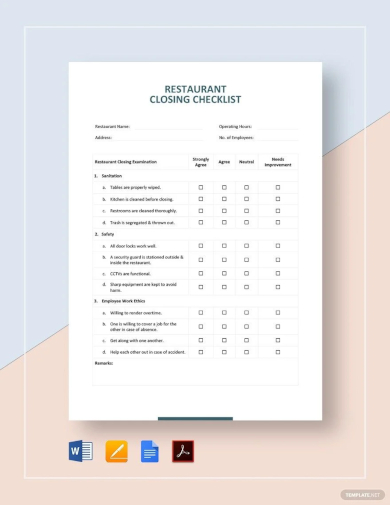
2. Sample Manager’s Closing Checklist Template
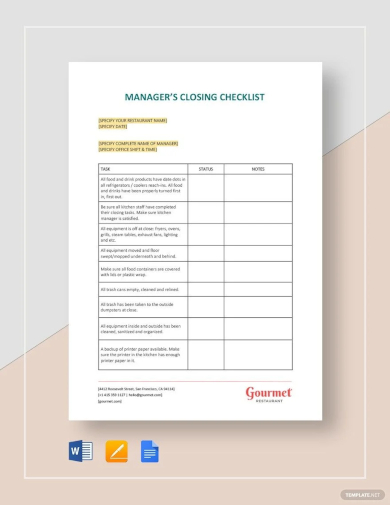
3. Sample Construction Pre-Closing Checklist Template
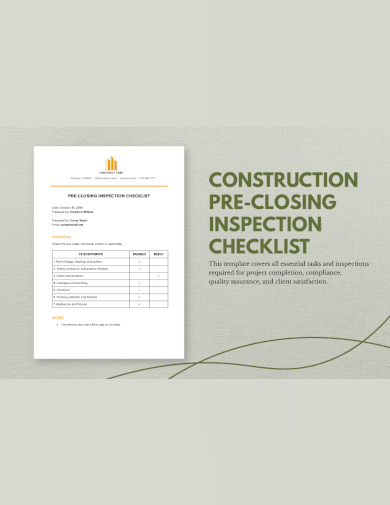
4. Sample Opening and Closing Checklist Template

5. Sample Monthly Closing Checklist Template
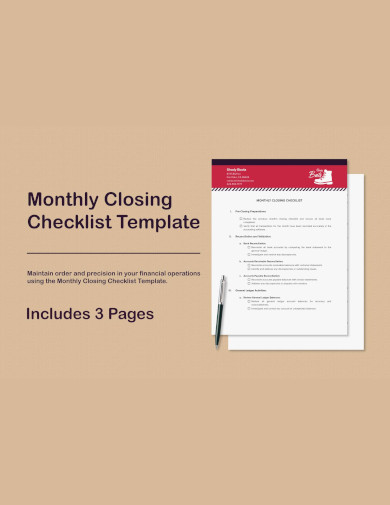
What is a Closing Checklist?
A closing checklist is a comprehensive sample list of tasks, requirements, and steps to be taken during the final stages of a transaction or project. Its primary function is to ensure that every detail has been addressed and all necessary actions have been taken before the official closure or completion. Whether it’s a real estate deal, a business merger, or the culmination of a project, a closing sample checklist is an essential tool to maintain organization, accuracy, and compliance.
Understanding the Closing Checklist
In the world of business, real estate, and various other sectors, the process of closing a deal or finalizing an sample agreement is intricate and multi-faceted. A closing checklist is an essential tool to ensure that all tasks, documents, and other necessary steps are completed before finalizing a transaction or project. Let’s dive into its importance, components, and benefits.
Importance of a Closing Checklist
When you’re approaching the end of a significant project or transaction, it’s easy to overlook some crucial steps or details. The closing checklist serves as a reminder and a comprehensive guide to help individuals and teams ensure that they don’t miss any critical element before sealing the deal. It aids in streamlining operations, reducing errors, and ensuring compliance with any sample legal or procedural requirements.
Components of a Closing Checklist
A closing checklist will vary depending on the nature of the business or transaction, but some general components are universal:
- Documentation: Ensure that all necessary sample papers, contracts, and agreements have been signed, notarized if required, and stored securely.
- Verification: All data and details should be double-checked for accuracy. This might include verifying payment details, the authenticity of documents, or ensuring all conditions of an format agreement are met.
- Notifications: Relevant parties should be informed about the closing. This might include internal teams, stakeholders, or any external entities involved in the transaction.
- Final Payments: Ensuring that any outstanding payments, fees, or charges related to the transaction are settled.
- Regulatory Compliance: Confirming that all actions and documents comply with local, state, or federal regulations, especially in sectors like real estate or finance.
Benefits of Using a Closing Checklist
- Efficiency: It provides a clear roadmap of what needs to be done, reducing the chances of redundant or repeated efforts.
- Accountability: Assigning tasks from the checklist to specific team members can help in holding them accountable for their responsibilities.
- Risk Reduction: By ensuring that all tasks are completed and all boxes are ticked, businesses can mitigate risks associated with oversights or omissions.
- Customer Satisfaction: In customer-facing industries, a smooth and error-free closing process can enhance the client’s experience, leading to higher satisfaction and potentially more referrals.
Origins and Applications
While the term “closing checklist” is commonly associated with real estate transactions, its utility spans across various industries. For instance:
- Real Estate: In the purchase or sale of property, a closing checklist would include tasks such as finalizing mortgage paperwork, scheduling and conducting inspections, verifying title information, and ensuring all fees are paid.
- Business Deals: When companies merge or get acquired, there are many legal and operational steps involved. A closing checklist here might cover areas like transferring assets, informing stakeholders, and finalizing sample contract terms.
- Project Management: At the end of a project, managers use a closing checklist to ensure all deliverables are met, stakeholders are informed, and resources are reallocated or closed out.
6. Sample Closing Checklist for Agents Template
7. Sample Year?End Closing Checklist Template
8. Sample Checklist for Closing a School Template
9. Sample Residential Closing Checklist Template
10. Sample Sellers Closing Checklist Template
11. Sample Mortgage Closing Checklist Template
12. Sample Buyer’s Closing Checklist Template
13. Sample Home Closing Checklist Template
14. Sample Bar Closing Checklist Template
15. Sample Purchaser Closing Checklist Template
16. Sample Debenture Closing Checklist Template
17. Sample Office Closing Checklist Template
18. Sample Closing Details Checklist Template
19. Sample Contract to Closing Checklist Template
20. Sample Real Estate Closing Checklist Templates
21. Sample Lender Closing Checklist Template
Why Use a Closing Checklist?
- Organizational Efficiency: It provides a structured and organized path to follow, ensuring no step is overlooked.
- Risk Management: Reduces the potential for mistakes or oversights that can have legal or financial implications.
- Clarity and Communication: A clear printable checklist provides a transparent tool for communication with team members or other stakeholders, setting expectations and responsibilities.
- Completion Assurance: It gives the confidence that once all items on the list are checked off, the transaction or project has been thoroughly and correctly concluded.
How do you Create a Closing Checklist?
When concluding a project, sample event, or any initiative, a closing checklist is indispensable. It ensures that all final tasks are completed, loose ends are tied up, and any necessary follow-up actions are identified. Creating a thorough closing checklist guarantees that everything is wrapped up neatly, leaving no room for potential oversights. Here’s a step-by-step guide to creating an effective closing checklist.
Step 1: Review Original Objectives and Goals
Begin by revisiting the original objectives and goals of the project or event. This serves as a reference point to gauge how well the project was executed and whether it achieved its intended outcomes. Comparing the final outcomes with the initial goals helps in identifying any remaining tasks or discrepancies that need to be addressed. For instance, if the project’s objective was to increase sales by 10%, a review might involve checking the final sales figures to measure success.
Step 2: List Outstanding Tasks
Document any remaining tasks that haven’t been completed. These might include finalizing reports, invoicing clients, or distributing post-event surveys. An exhaustive list ensures nothing is overlooked. For a conference, this might mean checking whether all vendors have been paid, sample feedback has been collected, and thank-you notes have been sent to speakers and participants.
Step 3: Evaluate and Document
Evaluate the project’s processes and results. Identify what worked well and what could be improved. This reflection is invaluable for similar future endeavors. Create a “lessons learned” document, capturing insights on project management, team dynamics, challenges faced, and innovative solutions developed. For example, if you organized a fundraising event, assess which marketing strategies were the most effective and which venue logistics need adjustment.
Step 4: Distribute Responsibilities
For each item on the checklist, assign a responsible individual or team. This ensures that each task has someone accountable for its completion. Also, set firm deadlines for these tasks, providing a clear sample timeline for when the project will be entirely wrapped up. If there are financials involved, ensure that a member of the finance team is tasked with finalizing budgets, processing outstanding payments, and reconciling any discrepancies.
Step 5: Archive and Store Relevant Data
Preserving records of the project is crucial for future reference. Organize all documentation, including sample contracts, communication, reports, and other relevant data. Store them in a secure location, whether it’s a physical archive or a digital repository. For instance, if the project involved creating a product, ensure that all design documents, prototypes, and customer feedback are stored systematically for future reference.
What is the Checklist for Month-End Closing?
Month-end close process should include recording incoming cash, checking your AR records and reconciling all accounts, including petty cash. Track all your business transactions, ensure accurate records and mitigate fraud risks. Remain up to date on the financial well-being of your organization.
In conclusion, a closing checklist is not just a list but a crucial tool that drives success, ensures quality, and fosters confidence in the closing process of any transaction or project. Whether you’re in real estate, finance, or any analysis industry where precision and attention to detail are paramount, integrating a closing checklist into your processes can be a game-changer.
Related Posts
FREE 18+ Facilitator Checklist Samples in MS Word | Google Sheets | PDF
FREE 18+ Complaint Checklist Samples in MS Word | Google Sheets | PDF
FREE 18+ Internship Checklist Samples in MS Word | Google Docs | PDF
FREE 18+ Statement Checklist Samples in MS Word | Google Sheets | PDF
FREE 20+ Voluntary Checklist Samples in MS Word | Google Sheets | PDF
FREE 18+ Summary Checklist Samples in MS Word | Google Sheets | PDF
FREE 14+ Sponsorship Checklist Samples in MS Word | MS Excel | PDF
FREE 18+ Conference Checklist Samples in MS Word | Google Sheets | PDF
FREE 17+ Lesson Checklist Samples in MS Word | Google Sheets | PDF
FREE 18+ Progress Checklist Samples in MS Word | Google Docs | PDF
FREE 18+ Enrollment Checklist Samples in MS Word | Google Docs | PDF
FREE 18+ Graduation Checklist Samples in MS Word | Google Sheets | PDF
FREE 15+ Consent Checklist Samples in MS Word | Google Sheets | PDF
FREE 18+ Submission Checklist Samples in MS Word | Google Docs | PDF
FREE 18+ Request Checklist Samples in MS Word | MS Excel | PDF

